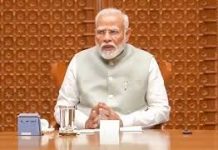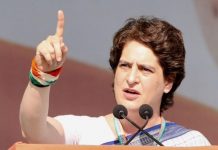
While the turnout of women voters has risen exponentially, they continue to be grossly under-represented in the Parliament as well as in State Assemblies, reports DR SANGITA LAHA
In recent weeks, we witnessed elections and political campaigns in four states — West Bengal, Assam, Tamil Nadu, Kerala and one Union Territory Puducherry. Women voters are apparently playing a bigger role in elections than ever before. Yet women — who make up almost half of voters — only comprised about one in ten of the candidates. Just 9 per cent in Kerala, 7.8 per cent in
Assam and 11 per cent in Tamil Nadu, Puducherry and West Bengal respectively. According to the Association for Democratic Reforms (ADR) report, the situation is even worse in state assemblies. It shows 4,120 MLAs were women which accords to only 9 per cent. What saddens me is the huge gap between men and women in political activities beyond voting. While the turnout of women voters has risen exponentially, women continue to be grossly under-represented in the Parliament as well as in State Assemblies.
Participation of women at the higher level is lower in comparison to their participation at the lower level of governance structure. In the domestic arena leadership and managerial skills of women are silently recognized however, they are not given space in the public arena. While other marginalized communities such as Scheduled Castes and Scheduled Tribes got reservations in the Parliament and State Legislative Assemblies, no reservation for women was given in the Constitution of India in the beginning which restricted their political empowerment.
India’s poor record on women’s representation is starkly revealed by the World Economic Forum’s Global Gender Gap Index 2021. The report reveals that India in 2021 has slipped 28 places and has been ranked 140th among 156 nations participating in the rankings. It is the third-worst performer among South Asian countries, with Pakistan and Afghanistan trailing and Bangladesh being at the top. The report states that the country fared the worst in political empowerment, regressing from 23.9 per cent to 9.1 per cent.
In the 1962 Lok Sabha polls, the Election Commission presented separate numbers for male and female voter turnout; women constituted a merely 46 per cent. But by 2019, the share had shot up exponentially by nearly 2 per cent to 67.18 per cent. During the same period, men’s turnout grew by only 5 per cent from 62.1 per cent in 1962 to 67.08 per cent in 2019. The differential growth rate in voter turnout resulted in a watershed moment in India’s electoral history in 2019. For the first time after independence, women’s turnout per centage in Lok Sabha elections was marginally higher than men’s participation in electoral process. The woman voters gave a decisive edge to electoral outcomes. It is evident that by the sharp rise in women voter turnouts in state and national elections played an important role for the win of political parties in rolling elections.
In the 2016 assembly elections in Assam, the gap between men and women voters reduced to just 7 per cent, from nearly 10 per cent in 2011. The BJP won the elections there, ending the 15-year Congress rule in the state. There is no denying that increased women turnout might have been one of the many factors at play in Assam and Bengal. While, there was a trend reversal in the 2016 assembly elections in Tamil Nadu. Women outnumbered men by a wide margin of 3.6 lakh votes. Statistics reviewed by India Today Data Intelligence Unit (DIU) shows in terms of casting votes, women outnumbered men in 136 of the 232 seats that went to polls.
The state of West Bengal is the fourth major state after Tamil Nadu, Kerala and Andhra Pradesh where women participation in the electoral process is high. The per centage of women voters not only crossed the 49 per cent mark, but the gender ratio had advanced from 956 last year to 961 in the final voter’s list published by the Election Commission of India. Despite the emergence of women voters as agents of change with the potential to swing elections, the representation of women in the both the house of the Parliament ,as well as the state legislative assemblies has been abysmally low.
Through my lenses
To rollback in the initial days after independence, the first formed Lok Sabha in 1951 had 22 women members of Parliaments which meant 4.4 per cent. The number did not change in the second Lok Sabha formed in 1957. According to data available on the Lok Sabha website, in the third Lok Sabha (1962-67) women representation increased to 37. However, there was a decrease in the numbers in the fourth, fifth and sixth Lok Sabha which stood as 33, 28 and 21 respectively.
The sixth Lok Sabha in 1977 witnessed the smallest proportion of women in Parliament at mere 3.5 per cent. The number again increased to 32 women in the seventh Lok Sabha (1980-84) and in the eighth (1984-89) with 45 women members being elected. When the Lok Saha was elected in 1989 for the ninth time, the number of women dropped to 28. Since then, there has been a minor but constant increase in the number of females.
The 10th Lok Sabha (1991-96) had 42 female members and the 11th was one less which meant 41in numbers. The 12th had 44 female MPs, while the 13th and 14th saw equal numbers at 52 females of the total 543 members. The best phase (2002-2019), the per centage of women MPs in the Lok Sabha continued to be appallingly low at 10 per cent.
The 15th Lok Sabha (2009-14) saw a major increase: it touched 64 females — i.e. about 12 per cent of the total House strength. The 16th — the outgoing — Lok Sabha had 66 female MPs, two more than the previous term. With over 14 per cent (78 MPs) female MPs, the current Lok Sabha has the highest number of women MPs since 1952.
Situation has changed only marginally since 1952: Though women’s share in population remained at 48.5 per cent the share of women MPs increased eight per centage points to 12.6 per cent between the first (1952) and the 16th Lok Sabha (2014). There was one woman MP for about eight million Indian women in 1952. By 2014 this was one for more than 9 million women — equivalent to the population of Austria. The share of women in national parliaments increased by nearly one per centage point to 24.3 per cent in 2018. The 1 per cent increase in 2018 represents a small improvement on women’s parliamentary representation.
According to the 2017 data released by the ministry of statistics and programme implementation of the last five years to 2017, female representation in state assemblies was the highest in Bihar, Haryana and Rajasthan (14 per cent), while Mizoram, Nagaland and Puducherry had no elected women representatives in their assemblies. Women ministers constituted only 12 per cent in Central Council of Ministers (9 out of 75).While in the 16th Lok Sabha, the total members were 64 women out of 534 which meant 12 per cent.
Gender representation Data on percentage of women in Parliament reveals that the per centage of women MPs in the Lok Sabha continues to be appallingly low at 10 per cent. As on 5th June 2021, the total number of women MP s in Rajya Sabha is 27 of the total number of 232 members which comes around 11 per cent. While Lok Sabha has 79 women members out of total 543 members. This brings the tally of women in parliament to 106. These figures are substantially lower compared to the global average of 22.9 per cent and Asian average of 16.3 per cent of women representatives in Upper House.
The highest number of women in the union council of ministers during a Lok Sabha tenure was in the 15th Lok Sabha i.e. 2009-14, wherein 14 different women have been made ministers. Of these, 4 women held the rank of Cabinet Minister, while 2 were Minister of State with independent charge and the rest of 8 women were Minister of State in different ministries. In terms of providing rank of Cabinet Minister for first time ministers, the 16th Lok Sabha i.e. 2014-19 had 3 new women ministers who were given the cabinet rank. The 17th Lok Sabha has the highest representation of women at 14.3 per cent but the ruling government included only six women ministers of which 3 are of Cabinet rank, highlighting how women are under-represented in Indian politics.
As of 30th March 2021 six states in India have no women ministers, including Nagaland, Sikkim, and Manipur. No state comes close to a third of female ministers — the highest proportion of female ministers is in Tamil Nadu with 13 per cent, and 68 per cent of states have less than 10 per cent female representation in state leadership roles.
Currently, India ranked 69th with 30 per cent of women in ministerial positions and 122nd with 17 per cent of women in parliament.. But there are more than a million women elected to the three-tier Panchayati Raj Institutions (PRI) of local governance due to 50 per cent and 20 per cent of reservation. The representation of women at the state level has lagged significantly behind, excluding women from important seats of institutional power and decision-making.This brings the age-old debate of inadequacy of women in our elected bodies. Therefore, it is imperative that the government should take legislative and constitutional reforms to ensure women’s fair access to political spheres, especially in the Lok Sabha and Rajya Sabha.
The author is an Associate Professor & Dean of Faculty, National University of Study & Research in Law. Views are personal
tehelkaletters@gmail.com











